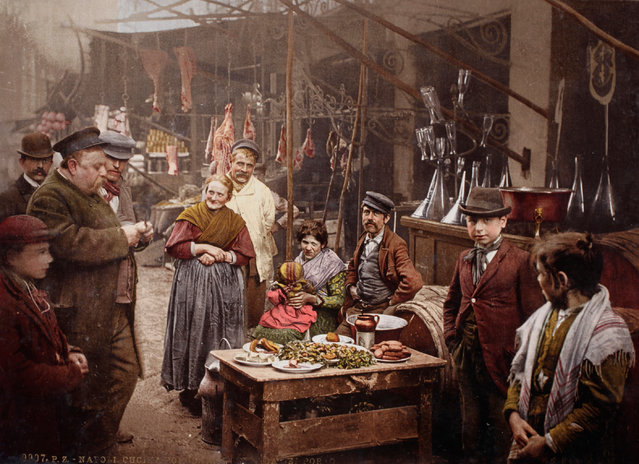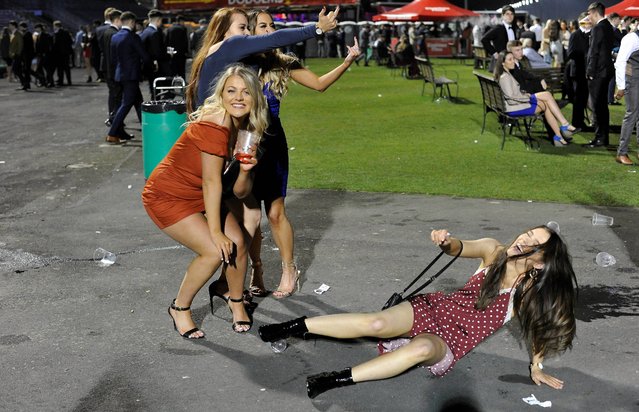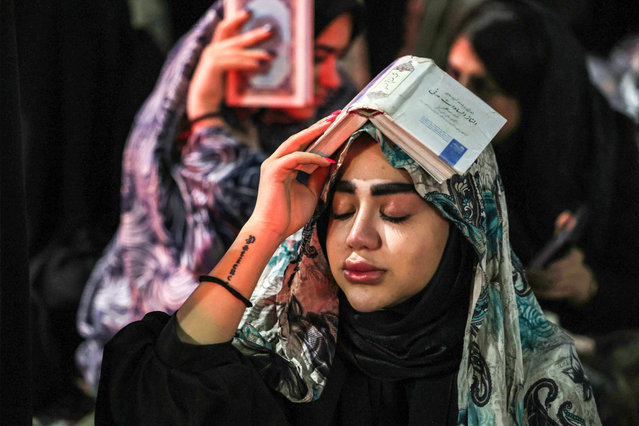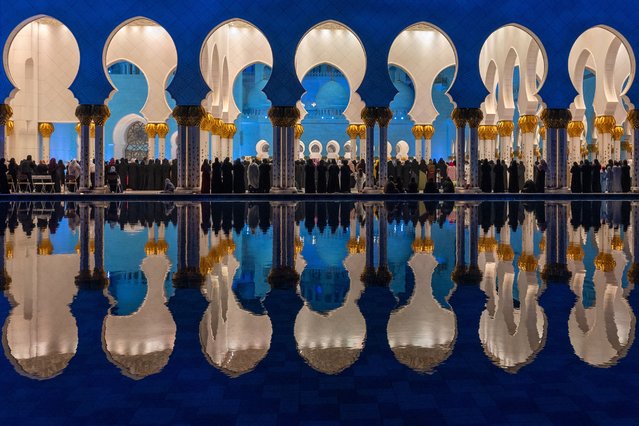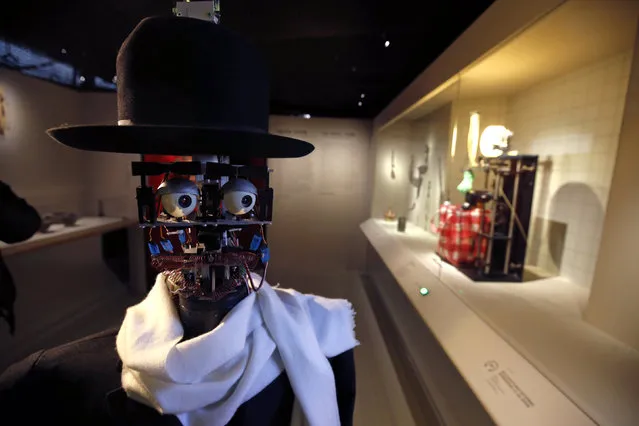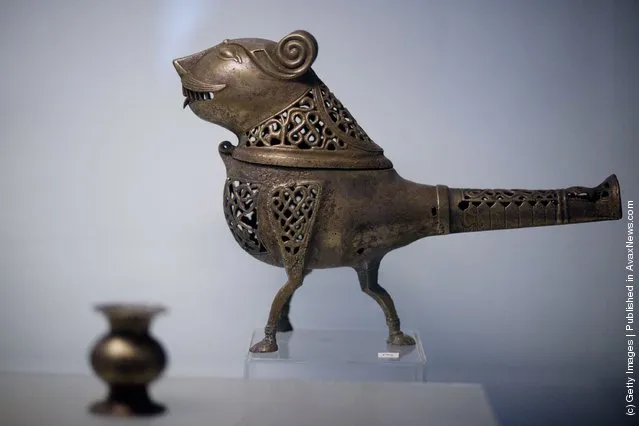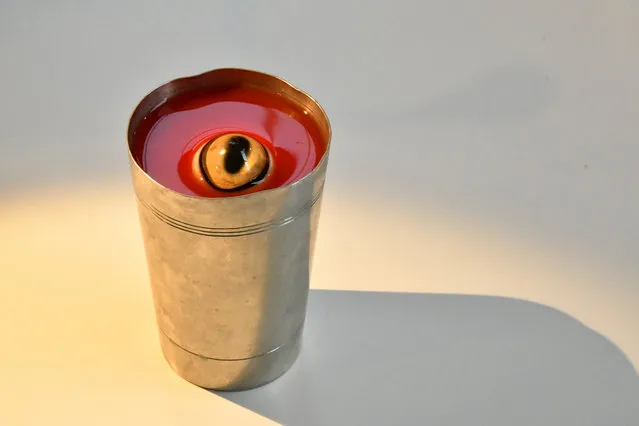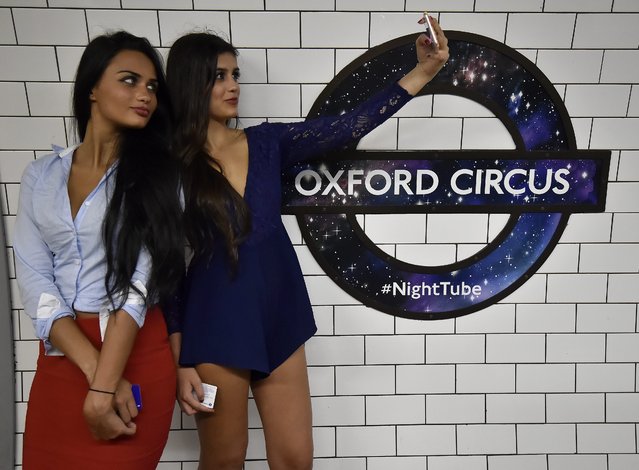
Tube passengers take a selfie next to a London underground roundel designed for the launching of the Night Tubes on display at Oxford Circus underground station in London, Britain, 19 August 2016. The long delayed Night Tubes service launched on 19 August. The 24-hour service will operate on Fridays and Saturdays. (Photo by Hannah Mckay/EPA)
01 Sep 2016 11:20:00,post received
0 comments

